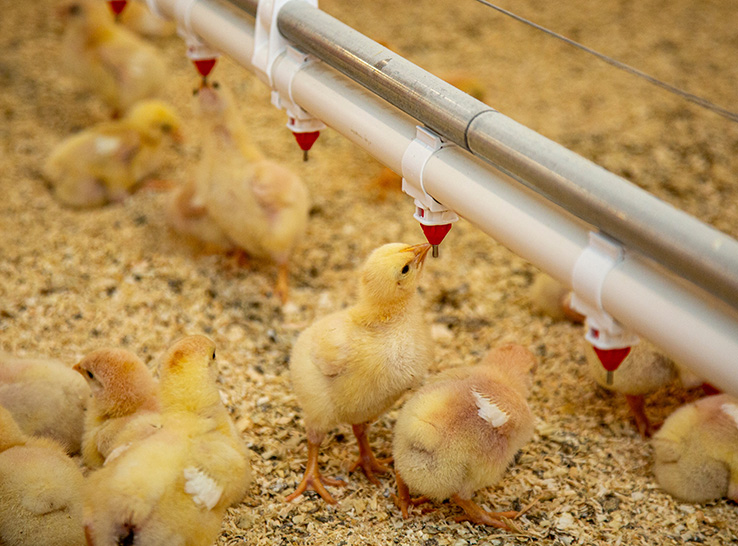Ultrasonic water meters can help identify and tackle issues early in the life of poultry, delivering high value at a modest cost, according to researchers presenting at the 2023 International Poultry Scientific Forum.
Field trials led by Garret Ashabranner, a graduate research assistant at the University of Georgia,1 highlighted a number of cases where the meters, which can accurately measure water usage from minutes after chicks are placed in houses until the end of grow-out, provided significant management benefits.
In one case, a leakage issue that added 200 gallons of water to one area of the floor was discovered within 24 hours of birds being housed.
In another example, investigators noted that water usage continued at night, alerting them to an issue with the house lights, which meant birds were receiving an 18% longer production day than if the system was working correctly.
Identification of lighting issues was the most unexpected finding of the work, Ashabranner said.
“No one is in the broiler house when the lights are supposed to go off, so it’s hard to identify if the lighting program is correct. Connecting an ultrasonic water meter to a modern controller with a display or a data acquisition system can make it easy to visualize when the lights are going off and on,” he said.
Accurate data at reasonable cost
Typical mechanical water meters used in poultry houses are limited in their capability to measure the water consumption of birds under 4 days old, as they can only measure flow rates of over 0.25 gallons per minute. Through the use of ultrasonic meters, modern house controllers can accurately collect, store and graph water consumption of chicks.
Bird density in houses can also be observed through accurate monitoring of water use. One house in the trials saw 20% more birds at the front of the house on day 14, which continued despite the grower’s best efforts, resulting in lower bodyweights and pay.
Other issues that can be picked up using data from the meters include drinker faults, as well as feed outages and potential feed formulation errors.
Ultrasonic water meters cost around $350 and have been available at an affordable price to be implemented in poultry houses for around 2 years, Ashabranner noted, meaning they are just starting to make an appearance on production sites. The push toward precision farming should eventually make them the industry standard.
Despite the modest up-front costs, they can bring large returns on investment through improved management.
“Getting accurate water-usage data on the day of placement, one of the most critical days for managing birds, is priceless,” he added.
1 Ashabranner G, et al. Using ultrasonic water meters as management tool early in the flock. International Poultry Scientific Forum, 2023, Atlanta, USA.






